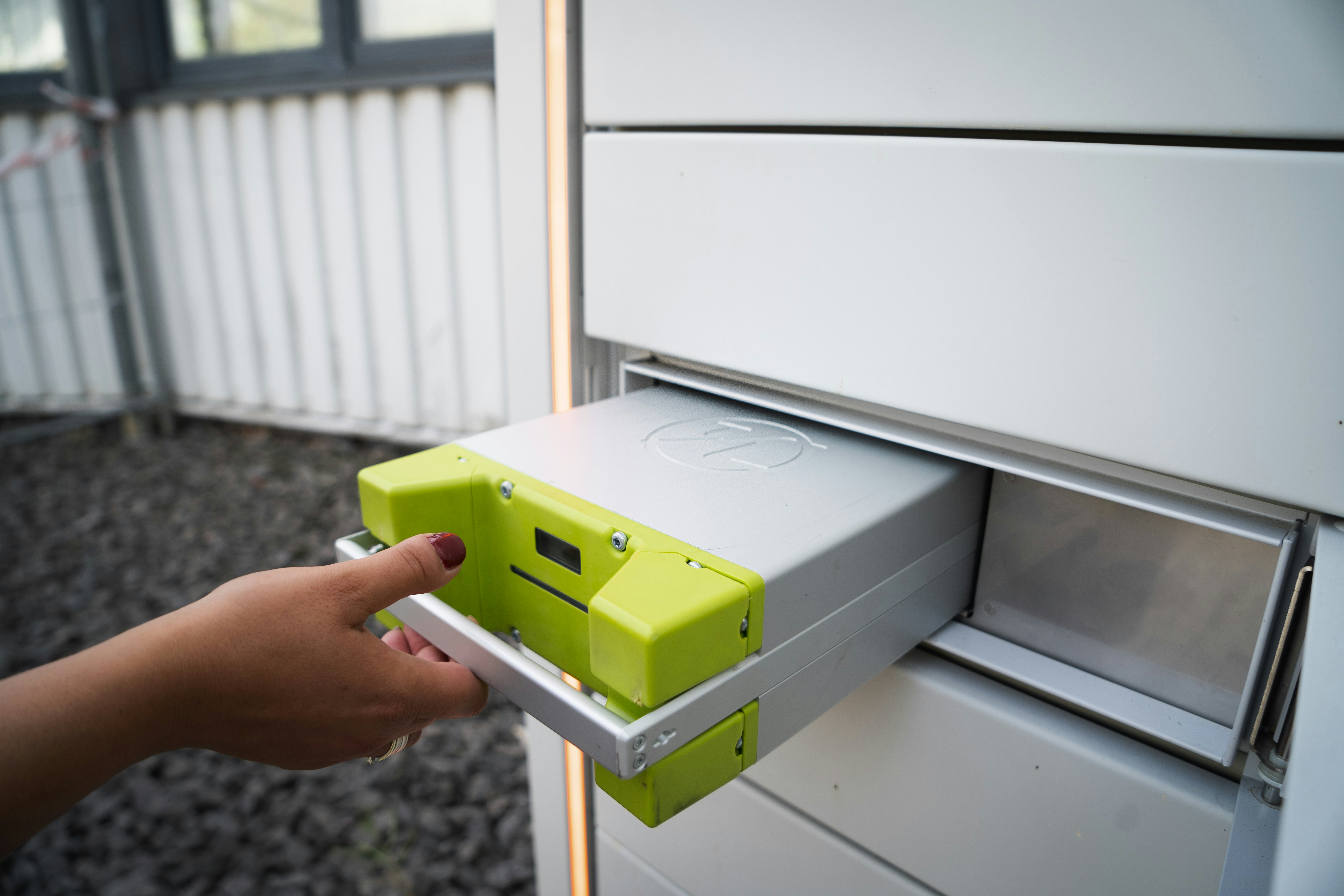So you’re looking to charge your smartphone quickly, huh? Well, you’re in luck because in this article, we’re going to uncover some of the most effective quick charging techniques for smartphones. Whether you’re constantly on the go or just need a quick boost in battery life, these techniques will have your phone juiced up in no time. From using fast charging cables to optimizing battery settings, we’ve got you covered with all the tips and tricks you need to know. So, grab your phone and get ready to supercharge your charging game!
Introduction to Quick Charging Techniques
In today’s fast-paced world, our smartphones have become an integral part of our lives. Whether it’s for communication, entertainment, or work, we rely heavily on these devices. However, one common issue that many smartphone users face is the constant need to charge their devices. This is where quick charging techniques come into play.
Quick charging techniques are designed to reduce the time it takes to charge your smartphone, ensuring that you can get back to using your device as quickly as possible. These techniques have greatly evolved over the years, thanks to advancements in technology. In this article, we will delve into the world of quick charging and explore the various wired and wireless methods available.
Wired Quick Charging Techniques
Qualcomm Quick Charge
One of the pioneering quick charging technologies is Qualcomm Quick Charge. This technology allows compatible devices to charge at a much faster rate compared to traditional charging methods. It achieves this by increasing the power output from the charger, allowing for a quicker transfer of energy to the smartphone’s battery. Qualcomm Quick Charge is widely supported by various smartphone manufacturers.
USB Power Delivery (USB-PD)
USB Power Delivery, also known as USB-PD, is another fast charging technique that has gained popularity. It utilizes USB Type-C cables and adapters to deliver increased power to smartphones, tablets, and other USB-C devices. The advantage of USB Power Delivery is its versatility, as it can provide higher power levels for larger devices, while also being backward compatible with older USB standards.
OPPO VOOC Flash Charge
OPPO’s VOOC Flash Charge is a proprietary fast charging technology developed by the Chinese smartphone manufacturer. With VOOC Flash Charge, users can experience incredibly fast charging speeds, enabling them to charge their devices to a significant percentage in just a few minutes. OPPO achieves this by using a higher voltage and innovative charging algorithms.
Samsung Adaptive Fast Charging
Samsung’s Adaptive Fast Charging is a quick charging technique specifically designed for Samsung smartphones and tablets. It allows compatible devices to charge at a faster rate by dynamically adjusting the charging voltage and current. This ensures efficient and fast charging without compromising the safety of the device or battery.
OnePlus Dash Charge
Dash Charge is a fast charging technology developed by OnePlus. It boasts impressive charging speeds and is known for its ability to maintain the charging speed even while using the device for tasks that consume a lot of power. Dash Charge achieves this by shifting the majority of the power management process to the charger, resulting in less heat generation and faster charging times.
Wireless Quick Charging Techniques
Qi Wireless Charging
Qi Wireless Charging is the most widely adopted wireless charging standard in the industry. It allows users to charge their smartphones simply by placing them on a compatible wireless charging pad. Qi charging pads use electromagnetic fields to transfer power to the device’s battery, eliminating the need for cables. While wireless charging is generally slower than wired charging, it offers convenience and ease of use.
PMA (Power Matters Alliance) Wireless Charging
The Power Matters Alliance (PMA) Wireless Charging standard is another wireless charging technique that gained some popularity in the past. However, it has been largely surpassed by the more widely adopted Qi standard. PMA Wireless Charging also utilizes electromagnetic fields to transfer power, but its compatibility with devices is more limited compared to Qi charging.
Fast Wireless Charging Technologies
To overcome the slower charging speeds of traditional wireless charging, various smartphone manufacturers have introduced their own fast wireless charging technologies. These technologies employ higher power levels to deliver faster wireless charging. While not as common as traditional wireless charging, fast wireless charging is steadily gaining traction and becoming more widely available.
Battery Technologies for Quick Charging
Lithium-Ion (Li-Ion) Batteries
Lithium-Ion (Li-Ion) batteries are the most common type of batteries used in smartphones. They offer a good balance between energy density, weight, and cost. Li-Ion batteries are capable of handling quick charging techniques and have become the standard choice for most smartphone manufacturers.
Lithium-Polymer (Li-Po) Batteries
Lithium-Polymer (Li-Po) batteries are another popular choice for smartphones. They are similar to Li-Ion batteries, but with a slightly different chemistry. Li-Po batteries offer some advantages over Li-Ion batteries, such as thinner form factors and the ability to be molded into different shapes. These batteries are also capable of quick charging, making them a preferred option for many smartphone manufacturers.
Graphene Batteries
Graphene batteries are a relatively new and promising technology that could revolutionize the smartphone industry. Graphene is a super-thin, lightweight material that has excellent electrical conductivity and thermal properties. Graphene batteries have the potential to enable ultra-fast charging speeds and significantly increase the capacity of smartphone batteries, allowing for longer usage times.
Solid-State Batteries
Solid-state batteries are a next-generation battery technology that is still in the early stages of development. These batteries use solid electrolytes instead of liquid electrolytes found in traditional batteries. This eliminates the risk of leakage and improves safety. Solid-state batteries are expected to offer faster charging speeds, higher energy density, and longer lifespan compared to current battery technologies.
Advanced Charging Techniques
SuperVOOC Flash Charge
SuperVOOC Flash Charge is OPPO’s latest fast charging technology, offering incredibly fast charging speeds. With SuperVOOC Flash Charge, users can charge their smartphones from 0 to 100% in just a matter of minutes. This technology relies on a unique combination of high voltage and low current, resulting in faster charging without generating excess heat.
Xiaomi Super Charge Turbo
Xiaomi Super Charge Turbo is another advanced charging technique that promises ultra-fast charging. This technology utilizes a high-power charger combined with a multi-level charge pump architecture to deliver impressive charging speeds. Xiaomi claims that Super Charge Turbo can fully charge a smartphone with a 4,000mAh battery in just 17 minutes.
Huawei SuperCharge
Huawei SuperCharge is a fast charging technology developed by the Chinese smartphone giant. It incorporates a combination of high voltage and current to enable fast charging. Huawei SuperCharge has been widely praised for its efficiency and ability to provide a significant amount of charge in a short period. It also includes thermal management and safety features to protect the smartphone and battery.
Motorola TurboPower
Motorola TurboPower is the fast charging technology used by Motorola smartphones. It allows for rapid charging by providing high power levels to the device. TurboPower chargers can charge a smartphone up to 50% in just 20 minutes, making it ideal for users on the go.
Apple Fast Charging
Apple has introduced fast charging capabilities in its latest iPhone models. With the appropriate USB-C to Lightning cable and a compatible charger, iPhone users can take advantage of fast charging to quickly charge their devices. Apple’s fast charging technology allows for significant charge gains within a short period, ensuring that users spend less time waiting for their devices to charge.
Factors Affecting Quick Charging
While quick charging techniques offer great convenience, there are several factors that can affect the overall charging speed and experience. It’s important to consider these factors to optimize your charging experience.
Battery Capacity and Health
The battery capacity and health of your smartphone play a significant role in the charging speed. A higher-capacity battery will generally take longer to charge, while a degraded or damaged battery may not be able to charge at its full potential.
Charging Cable Quality
The quality of the charging cable used can impact the charging speed. Low-quality or damaged cables may not be able to handle the higher power levels required for quick charging, resulting in slower charging speeds.
Charging Adapter Power
The power output of the charging adapter used is crucial for quick charging. A higher wattage adapter can deliver more power to the device, enabling faster charging. It’s important to use a charging adapter that supports the quick charging technology of your smartphone.
Temperature and Thermal Management
Temperature also plays a role in quick charging. High temperatures can impact the charging speed and efficiency, as well as the overall lifespan of the battery. Proper thermal management is essential to ensure safe and reliable quick charging.
Phone Usage and Background Apps
Using your smartphone while it is charging or running power-hungry apps in the background can slow down the charging process. These activities consume power, which reduces the amount of power available for charging. It is advisable to minimize usage during charging for optimal charging speeds.
Safety Considerations
Although quick charging techniques offer numerous benefits, it’s important to be aware of potential safety considerations to protect your device and yourself.
Overheating and Fire Risks
Quick charging technologies can generate heat, especially when charging at high power levels. Excessive heat can damage the battery or even pose a fire risk. Manufacturers implement various safety measures, such as temperature sensors and thermal management systems, to prevent overheating and ensure safe charging.
Impact on Battery Lifespan
Quick charging techniques, especially those that utilize higher voltages or currents, can potentially shorten the lifespan of the battery. Rapid charging can cause more stress on the battery cells, leading to accelerated degradation over time. It’s important to strike a balance between quick charging convenience and maintaining overall battery health.
Compatibility and Certification
To ensure optimal performance and safety, it’s essential to use chargers and cables that are compatible with your device’s quick charging technology. Using non-certified or counterfeit chargers may not only result in slower charging speeds but can also pose safety risks. Look for chargers and cables that are certified by reputable organizations or recommended by the device manufacturer.
Importance of Genuine Chargers
Using genuine chargers from the device manufacturer is highly recommended. These chargers are specifically designed for and tested with the device, ensuring compatibility and safe charging. Non-genuine chargers may not provide the same level of performance and safety as genuine chargers.
Best Practices for Quick Charging
To maximize the benefits of quick charging and minimize any potential risks, here are some best practices to follow:
- Use the original charger and cable provided by the device manufacturer, or reputable third-party accessories recommended for your device.
- Avoid using your smartphone while it is charging, especially for power-intensive tasks.
- Keep your smartphone and charging equipment in a well-ventilated area to prevent overheating.
- Regularly check for any updates or firmware upgrades related to quick charging technology for your device.
- If you notice any abnormal behavior during charging, such as excessive heat or sudden battery drain, consider consulting the device manufacturer.
Future of Quick Charging
As technology continues to advance, the future of quick charging looks promising. Manufacturers and researchers are constantly exploring new techniques and materials to further enhance charging speeds and efficiency.
Wireless Charging Advancements
Wireless charging technologies are evolving, with the development of higher power levels and improved charging pads. The goal is to achieve faster and more efficient wireless charging, which could eventually rival or even surpass the speeds of wired charging.
Ultra-Fast Charging Technologies
Ultra-fast charging technologies are being developed to deliver even faster charging speeds. These technologies aim to reduce charging times to mere seconds or minutes, allowing users to quickly power up their devices whenever needed. Such advancements require breakthroughs in battery chemistry and charging infrastructure.
Exploration of New Battery Materials
Researchers are actively exploring alternative battery materials to improve charging capabilities and overall battery performance. Materials such as silicon, sulfur, and various metal alloys show promising potential for higher energy density and faster charging speeds.
Integration of Artificial Intelligence
Artificial intelligence (AI) is being integrated into charging algorithms to optimize charging speeds based on a device’s usage patterns and battery health. AI-powered charging can intelligently adjust the charging parameters to achieve faster charging without compromising battery longevity or safety.
Environmental Considerations
As the demand for quick charging increases, so does the need for energy-efficient and environmentally friendly charging solutions. Manufacturers and researchers are working to develop charging techniques that minimize energy consumption, reduce electronic waste, and utilize sustainable materials.

Comparison of Quick Charging Standards
With a variety of quick charging standards available, it’s important to understand the differences between them to make an informed decision.
Power Output and Charging Speed
Different quick charging standards offer varying power outputs and charging speeds. Some technologies may deliver faster charging speeds but require specific chargers or cables. It’s essential to consider the power output and charging speeds offered by each standard and choose the one that best suits your needs.
Device Compatibility
Not all quick charging standards are compatible with every smartphone or device. Some technologies are exclusive to specific manufacturers or require specific hardware components. Before investing in a quick charging method, ensure that your device is compatible with the chosen standard.
Availability of Accessories
The availability of chargers, cables, and wireless charging pads is also worth considering. Some quick charging standards have a wider range of accessories and options available, making it easier to find compatible accessories for your device.
User Experience and Convenience
Beyond the technical aspects, the user experience and convenience of each quick charging standard can vary. Factors such as ease of use, compatibility with other devices, and overall charging experience should be taken into account when making a decision.
Energy Efficiency and Sustainability
Energy efficiency and sustainability are becoming increasingly important considerations in today’s world. Some quick charging technologies prioritize energy efficiency, helping to reduce power consumption and environmental impact. It’s worth considering these factors when choosing a quick charging standard.
Conclusion
Quick charging techniques have revolutionized the way we charge our smartphones. With the ability to power up our devices in a fraction of the time, quick charging has become an essential feature for every smartphone user. From wired techniques like Qualcomm Quick Charge and USB Power Delivery to wireless methods like Qi Wireless Charging, there are various options available to suit different needs and preferences.
Battery technologies, such as Lithium-Ion and Lithium-Polymer batteries, continue to improve, enabling faster and more efficient charging. Advanced charging techniques like SuperVOOC Flash Charge and Xiaomi Super Charge Turbo push the boundaries of quick charging, promising unbelievably fast charging speeds. However, it’s important to be aware of safety considerations and follow best practices to ensure optimal charging performance and battery health.
The future of quick charging looks promising, with advancements in wireless charging, ultra-fast charging technologies, and the exploration of new battery materials. As technology evolves, we can expect faster charging speeds and more energy-efficient solutions.
When choosing a quick charging method, consider factors like power output, device compatibility, availability of accessories, user experience, and energy efficiency. By making an informed decision, you can enjoy the benefits of quick charging while ensuring the longevity and safety of your smartphone and its battery.




